The growth environment and breeding methods of Poinciana
Last Update :2024.11.09
Article Catalog
Phoenix flower is the flower of the Poinciana tree, which originally grew in the wild in Madagascar, Africa. It is an endangered species. It has been artificially introduced and cultivated and is widely planted as an ornamental tree. Let me tell you how to cultivate Poinciana trees.
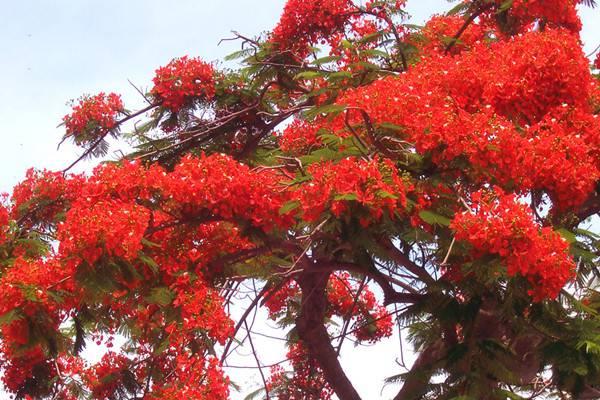
Growing environment of the Poinciana tree
The Poinciana tree grows in tropical and warm subtropical areas around the world.
It has been introduced and cultivated in Taiwan, Hainan, Fujian, Guangdong, Guangxi, Yunnan and other provinces.
In the United States, Poinciana can grow in Florida, the Rio Grande Valley in southern Texas, desert areas in Arizona and California, Hawaii, Puerto Rico, the U.S. Virgin Islands and Guam.
Poinciana also grows widely in the Caribbean.
The growth habits of Poinciana
Poinciana has strong germination and rapid growth. Generally, the height of 1-year-old can reach 1.5-2 meters, and the height of 2-year-old can reach 3-4 meters. It will bloom after 6-8 years of planting.
In South China, winter buds germinate in early February every year, and the peak growth period is from April to July. In late July, due to high temperatures, growth decreases. After mid-to-late August, the temperature drops and growth accelerates. In October Later, the growth slows down, and the leaves fall from December to January of the following year.
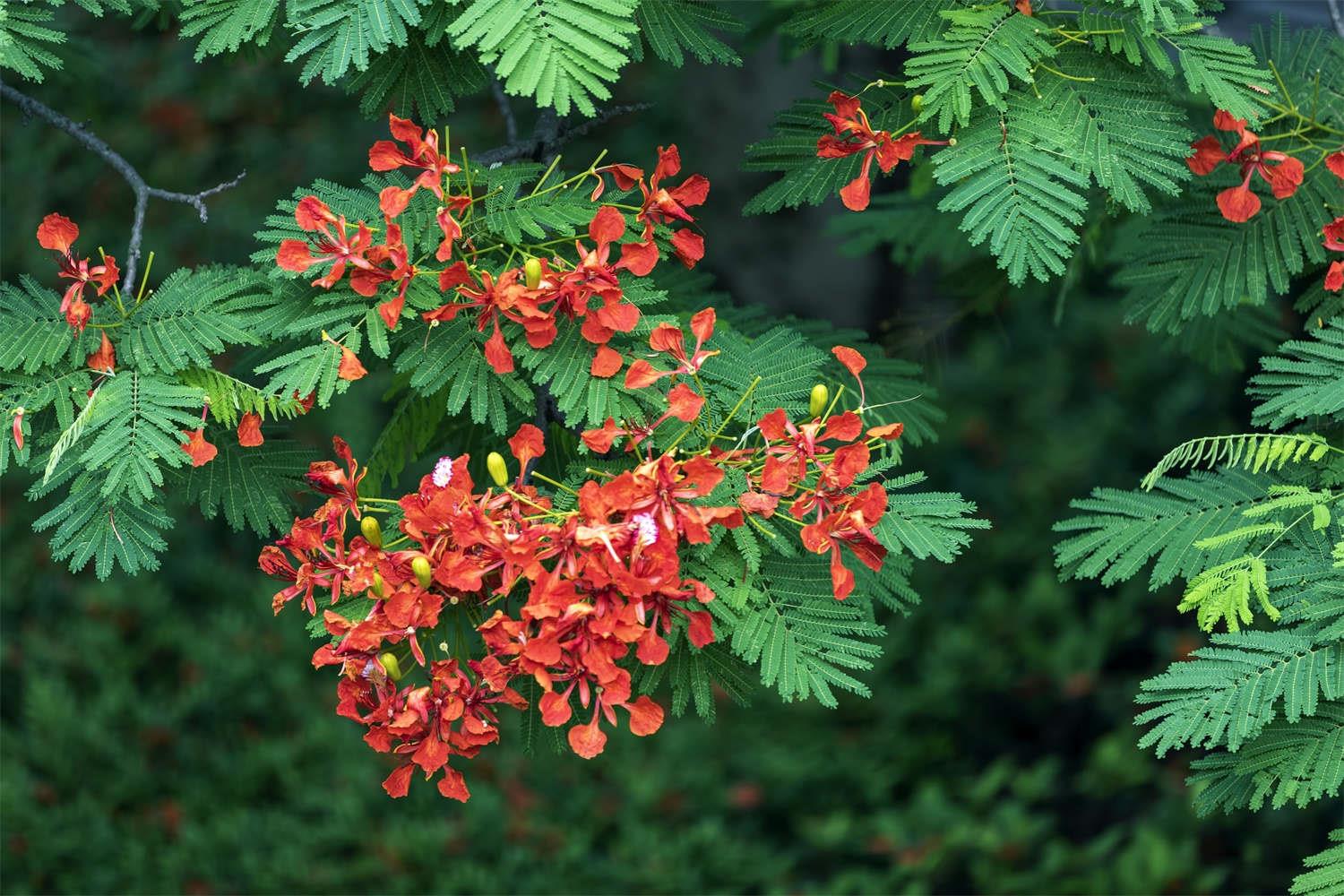
How to breed Poinciana
< p>Poinciana is mainly propagated by sowing. It is sown in April and May in spring. The seeds are hard and must be soaked in 90°C hot water for 5-10 minutes or soaked in warm water for one day. The germination rate is higher. Germination can occur one week after sowing.
Poinciana is a tropical tree species that begins to bloom after 6 to 8 years of planting. It likes high temperature, humidity and sunny environments. The suitable growth temperature is 20-30°C. It is not cold-tolerant and the temperature in winter is not lower than 5°C.
It is suitable for fertile, sandy loam rich in organic matter. It is afraid of water accumulation and must have good drainage. It is more tolerant of drought and barren soil. It has shallow roots but a well-developed root system and strong wind resistance. Resists air pollution.
Fertilization should be applied once before budding and before flowering in spring. Broken branches and leaves should be cleaned up in time during typhoon season. Diseases and insect pests include leaf spot and armyworm larvae, etc., which must be controlled symptomatically.
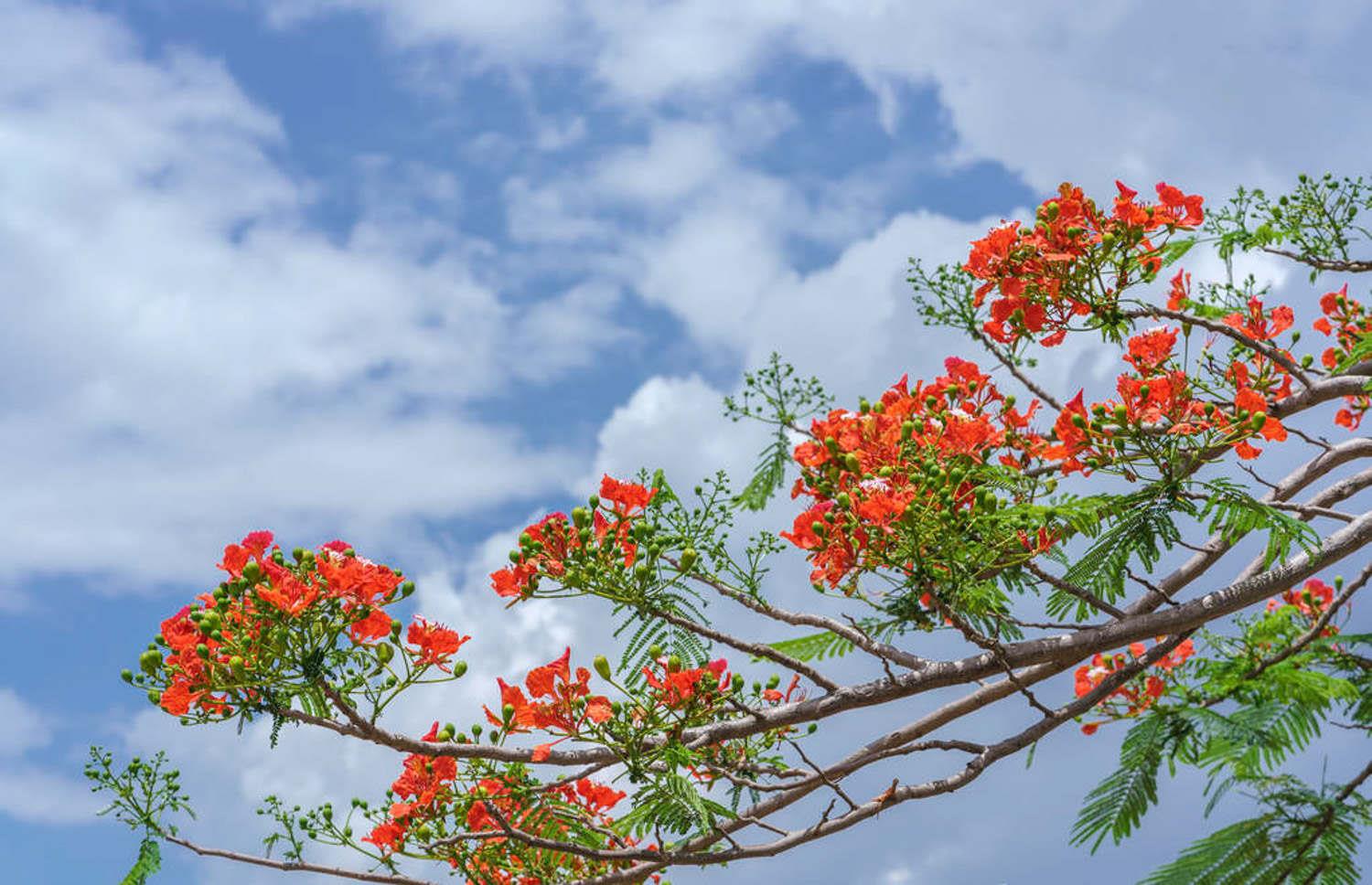
- END -
The difference between winter jasmine and forsythia
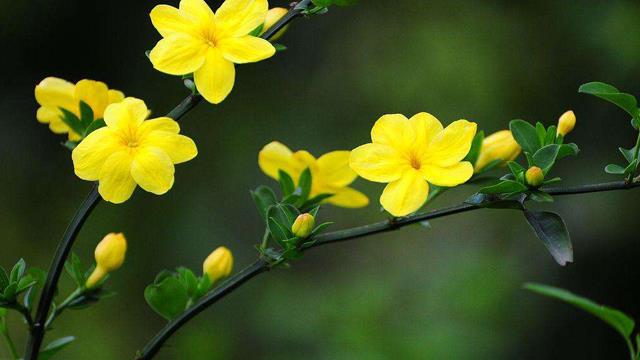
Leaves: The leaves of jasmine are oval or elliptical, with recurved edges. They ar...
Jasmine propagation method, is the survival rate of jasmine propagation high?
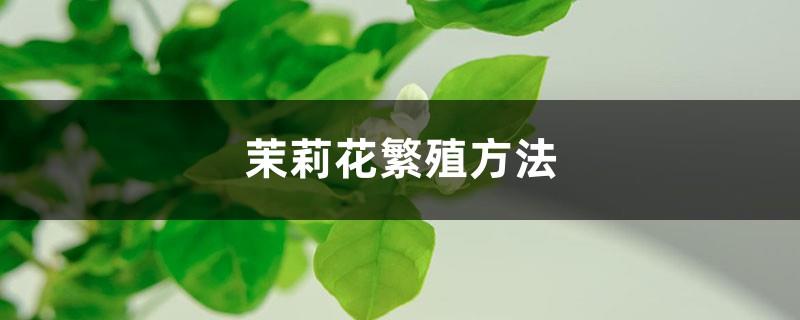
Jasmine cuttings are commonly used and can be done in autumn. The substrate can be...